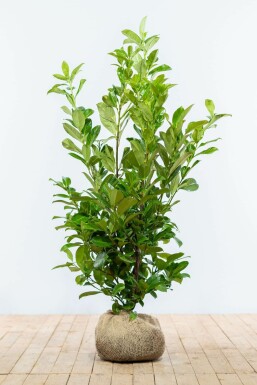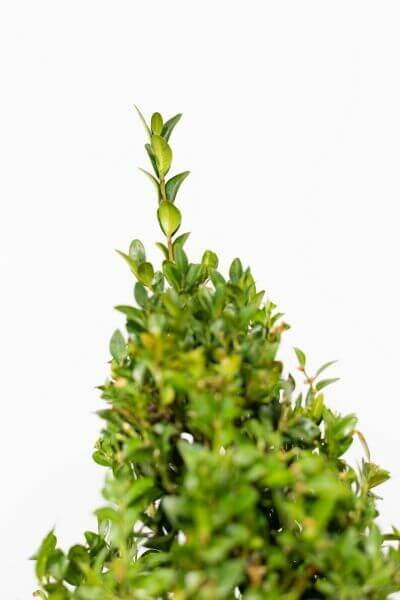Hedge Plants For Salt Tolerance
Improve your garden's attraction with rich hedge ranges such as Yew (Taxus), Thuja, Laurel, Photinia, and Bamboo, celebrated for their structural stability and environmental advantages.
Yew and Thuja supply evergreen coverage and winter season resilience, while Laurel provides quick growth and broad, aromatic leaves.
Photinia includes seasonal charm with its dynamic red foliage, and Bamboo provides a low-maintenance, serene ambiance.
These hedges enhance air quality, lower noise, and produce tranquil, personal spaces.
Correct planting, spacing, and maintenance guarantee energetic growth and ecological consistency.
Explore how these lavish varieties can raise your garden's appeal and wellness.
Key Takeaways
Transform Your Garden With Lush Hedge Ranges
- Select Yew for its thick, evergreen development and unrivaled longevity.
- Select Laurel for its quick development and broad leaves, ensuring quick personal privacy.
- Pick Photinia for its lively seasonal foliage, which turns a striking dark red.
- Make use of Bamboo for a low-maintenance, winter-hardy hedge with visual appeal.
- Area plants 2-3 per meter and prune regularly for optimal development and health.
Popular Hedge Plants
When transforming a garden with rich hedge ranges, it's important to think about popular hedge plants such as Yew, Thuja, Laurel, and Photinia due to their special attributes and advantages.
Yew (Taxus) is extremely respected for its durability and thick, green development, making it a prime option for sustaining landscapes.
Thuja is kept in mind for its evergreen foliage and robust winter resilience.
Photinia adds seasonal vibrancy with red leaves that darken with time, developing dynamic visual appeal.
Laurel uses quick development and aromatic, broad leaves, suitable for quick privacy.
Additionally, Bamboo is an outstanding choice for ambiance, using a low-maintenance, winter-hardy alternative that improves the garden's aesthetic with its stylish, swaying canes.
These choices deal with a range of horticultural needs and preferences.
Advantages of Garden Hedges
Garden hedges use a plethora of advantages, making them a valuable addition to any landscape. These natural barriers are cost-effective to carry out and offer significant wind defense, boosting air flow and contributing to sound reduction. The thick foliage of hedges like Thuja and Beech guarantees privacy by blocking exposure, creating a remote and peaceful environment.
Hedges likewise play an important role in microclimate guideline, offering a steady environment that promotes plant development and reduces temperature level changes. Their intricate leaf structures filter pollutants, enhancing air quality and contributing to a much healthier garden ecosystem.
Furthermore, hedges master sound decrease, taking in and deflecting sound waves to lower ambient sound levels. This dual performance of supplying both acoustic and visual privacy boosts the overall harmony and aesthetic appeal of any garden.
Planting and Upkeep Tips
For an effective hedge, precise preparation of the planting area is crucial. Guarantee the soil has correct pH and drainage to support strong root development.
Area the plants appropriately for the chosen types. Water the hedge regularly during its preliminary development phase, adjusting as needed with seasonal modifications.
Carry out a systematic insect control and illness avoidance method, using natural or chemical treatments when necessary. Frequently inspect for aphids, mites, and fungal infections.
Apply mulch to keep wetness and reduce weeds. Seasonal pruning promotes dense growth and air flow, vital for plant health.
Following these standards will assist you cultivate a dynamic, properly maintained hedge that enhances the charm of your garden.
Spacing and Cutting Guidelines
Spacing and Cutting Standards
Correct spacing and trimming are vital for cultivating healthy, visually appealing hedges. Adequate spacing ensures each plant receives sufficient nutrients, light, and airflow.
Follow these guidelines for optimal hedge maintenance:
- Spacing: Position hedge plants 2-3 plants per meter to encourage robust growth.
- Pruning Techniques: Regular pruning is important for keeping wanted hedge height and shape. Cut brand-new growth in summertime and cut down older wood during winter.
- Seasonal Care: Adjust cutting approaches and schedules according to seasonal requirements to ensure plant health.
- Hedge Height: Regularly monitor and trim to maintain the preferred hedge height and achieve uniform aesthetics.
Complying with these steps will guarantee your hedge prospers, improving both the appeal and performance of your garden.
Selecting the Right Hedge
Choosing the Right Hedge
Picking the suitable hedge includes assessing elements such as mature height, foliage density, and ecological durability. Successful hedge plant choice requires understanding each types' growth characteristics and site-specific flexibility.
For example, Yew (Taxus) uses outstanding longevity and thick growth, while Thuja is significant for its winter strength. Furthermore, thinking about maintenance requirements is crucial; fast-growing types like Laurel or Privet need regular cutting, whereas low-maintenance choices like Bamboo or Ivy may be more effective for those seeking very little upkeep.
Environmental aspects such as soil type, light accessibility, and wetness conditions should likewise guide the choice process. This cautious approach guarantees the picked hedges will flourish, supplying both aesthetic and practical benefits to the garden landscape.
Shipment and Planting Guidance
To guarantee your hedge plants grow, they ought to be provided by specialized carriers and planted quickly upon arrival.
Follow these necessary steps for successful planting:
- Soil Preparation: Enhance the soil with raw material to enhance drainage and nutrient content.
- Planting Depth: Produce a trench two times the width and equivalent to the depth of the root ball.
- Watering Techniques: Water thoroughly after planting, keeping the soil consistently damp however not filled.
- Mulching: Apply a layer of mulch to maintain wetness and suppress weeds.
Client Support and Service
Given the important function of prompt assistance in horticultural pursuits, our customer support team is available six days a week through telephone, email, and social networks to provide skilled advice and swiftly address any concerns. Their dedication to quick response times ensures customer satisfaction by dealing with queries associated with plant health, ideal planting techniques, and maintenance schedules.

Accessibility
-------------------
Within 24 hours
This detailed support group, reinforced by an outstanding 9.3/ 10 client score, highlights our dedication to boosting the gardening experience for every client.
Frequently Asked Questions
How Long Does It Take for Hedge Plants to Establish?
Hedge plants typically require one to three years to become completely developed, with the exact duration varying by species and growing conditions.
Effective care during this critical period is important for robust development. Consistent watering, watchful weed control, and suitable fertilizer application are critical in promoting strong root development.
For example, fast-growing species like Laurel may develop quicker, while slower-growing varieties such as Yew may take longer. Persistent maintenance accelerates the establishment procedure, leading to healthy and thick hedges.
What Are the Best Hedge Plants for Privacy?
The question of the finest hedge plants for personal privacy involves evaluating evergreen and deciduous options.
Evergreen hedges like Thuja, Laurel, and Cypress supply year-round protection, guaranteeing continuous privacy.
On the other hand, deciduous hedges such as Beech provide seasonal personal privacy, shedding leaves in colder months.
Secret upkeep suggestions for privacy hedges consist of regular trimming, fertilizing in spring, and correct spacing-- usually 2 to 3 plants per meter.
Furthermore, constant watering and persistent weed removal are vital for promoting healthy, thick growth.
Can Hedge Plants Bring In Wildlife to My Garden?
Yes, hedge plants can draw in wildlife to your garden by providing necessary benefits like shelter, food, and nesting sites, thereby boosting local biodiversity. Yew, holly, and laurel are exceptional for drawing in birds, while ivy supports a range of bugs.
Nevertheless, it's essential to note that there are some downsides, such as increased maintenance to handle pests and routine upkeep. Thoroughly picking and preserving hedge ranges can help stabilize these downsides and benefits, eventually cultivating a sustainable and lively ecosystem in your garden.
Exist Any Blooming Hedge Plants Available?
Yes, there are flowering hedge plants available that can improve the appeal of your garden.
For example, Elaeagnus, likewise Browse this site understood as Olive Willow, produces fragrant white flowers in the fall, adding a touch of sophistication.
Photinia, another popular option, showcases vibrant red leaves that develop into an abundant green, developing a dynamic visual impact throughout the seasons.
To guarantee these plants grow, it's essential to practice appropriate pruning methods and seasonal upkeep, such as cutting brand-new growth in the summer and cutting back in the winter season.
These steps will assist keep the health and visual appeal of your blooming hedges.
How Do I Prevent Pests in My Hedge Plants?
To prevent pests in hedge plants, employ natural insect control techniques and preserve appropriate hedge care. Present useful pests like ladybugs, which victimize damaging bugs, to develop a well balanced environment.
Frequently check your hedges for indications of invasion and without delay get rid of any afflicted parts to prevent the spread. Guarantee the health of your hedges by using balanced fertilizers and offering adequate water.
Utilize mulching to retain soil wetness and correct spacing to lower plant tension and promote robust growth. These practices collectively assist in minimizing bug concerns and preserving a healthy hedge.
Conclusion
In essence, selecting the right hedge ranges such as Yew, Thuja, and Laurel can change any garden into a relaxing haven. These plants provide year-round plant, improve aesthetic appeal, and deal useful benefits like sound decrease and wind security.
Proper planting strategies, accurate spacing, consistent watering, and seasonal cutting are crucial for optimal development.
Reliable shipment services and professional consumer assistance ensure a smooth experience from purchase to planting, making it simpler than ever to raise your outdoor area.
Garden hedges provide a multitude of benefits, making them an important addition to any landscape. These natural barriers are economical to implement and provide considerable wind protection, boosting air flow and contributing to sound reduction. The thick foliage of hedges like Thuja and Beech guarantees personal privacy by obstructing presence, producing a tranquil and secluded environment.

Pruning Strategies: Routine pruning is vital for preserving desired hedge height and shape. Cut brand-new growth in summer and cut back older wood throughout winter.